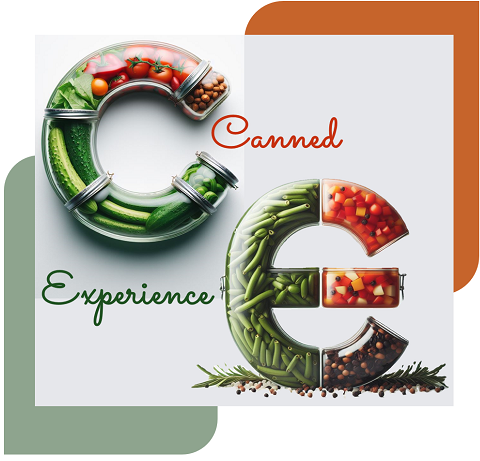Useful Basics Of Animal Fat Rendering (Lard, Tallow And Other Animal Fats)
Views: 218
The internet is filled with information on how to render animal fats, such as lard, tallow and duck fats. Like with any hot topic, there are various views on the best method to use to achieve the desired result. After successfully experimenting with rendering various animal fats over the past few years, we wanted to add our thoughts to the conversation. Additionally, we felt compelled to provide general guidelines for storing rendered fats to help you keep your longer.
Two fat rendering methods
Regardless of the type of animal fat you want to render, there are two methods in use today to help you accomplish the job. As a full disclosure, we have a preference for one of these methods and advocate for its use in our recipes. But, to be fair, our preference is based on trying both methods, seeing the results, and doing extra research to understand the differences between them.
Dry render method
Dry rendering is a traditional method that our ancestors used for centuries to make lard, tallow and other animal-derived cooking fats. In simple terms, dry rendering means melting animal fat without adding any liquids. This method uses dry heat to render fat.
The way it typically works is as follows:
- Preparation: The animal fat (such as suet or lard) is cut into pieces
- Heating: The fat is placed in a dry pan or pot over low to medium heat. As the fat heats up, it begins to melt and release its own liquid
- Separation: As the fat melts, it separates from any connective tissue present in the fat. Depending on the type of fat you are melting, these impurities can be edible, as in the case of cracklings, a by-product of pork or duck fat rendering.
- Straining: Once the fat has completely melted and the impurities have separated out, the mixture is strained through a fine mesh strainer or cheesecloth to remove any solid particles.
The good and bad of the dry render method:
The main advantage of the dry render method is its simplicity. Unlike the wet rendering method, you don’t have to worry about adding too much or too little water or making sure that all the water has evaporated.
The dry render method has two main drawbacks.
- Firstly, it typically requires higher temperatures, which can produce harmful compounds, including those linked to cancer, in the rendered animal fat:
- ” Thermal treatment of lipids rich in fatty acids contributes to the formation of lipid oxidation products (LOPs) which have potentially harmful effects on human health. [] Results showed that LOPs increased significantly (p < 0.05) with the increase in temperature.” Ref: Front. Nutr., 02 June 2022, Sec. Food Chemistry, Volume 9 – 2022
- Secondly, dry-rendered lard, tallow, and other animal fats often retain a stronger animal odor, rather than being odorless. Additionally, the resulting color of dry-rendered animal fats tends to be darker, which is typical of the previously used cooking fat or oil.
To summarize, dry rendering is less technique-demanding, less effort-intensive and more laid-back approach. However, the dry-render method temperature should be carefully controlled to prevent burning or scorching. Unfortunately, as with everything easy, the results are far from perfect.
Wet render method
Unlike the dry rendering method, the wet method relies on low heat and the addition of liquid, usually water, to make lard, tallow, and other animal-derived cooking fats.
The way it typically works is as follows:
- Preparation: The animal fat (such as suet or lard) is cut into pieces
- Heating: Once the fat is placed into a pot or a pan, it gets covered with water. Then, the fat-water mixture gets heated over low to medium heat. Once the water starts to boil, the fat starts to heat too. As a result, the fat begins to melt into the water. Depending on the type of fat used, you may be able to turn off the heat once the water comes to a boil or, you may need to continue simmering fat in boiling water.
- Separation: As the fat melts into the water, it separates from any connective tissue present in the fat. Similar to the dry render method, these impurities can be edible, as in the case of cracklings, a by-product of pork or duck fat rendering.
- Evaporation: The fat continues to be simmered in water until all of the water evaporates and only liquid fat remains in the pot.
- Straining: Once the fat has completely melted, the water completely evaporated and the impurities have separated out, the mixture is strained through a fine mesh strainer or cheesecloth to remove any solid particles.
The good and bad of the wet render method
There are several advantages of rendering animal fat using the wet render method:
- Firstly, indirect rendering in hot water vs. through applying direct heat results in a higher quality of the finished product. Essentially, this method produces less processed cooking fat, as it hasn’t been fried with yet.
- Secondly, rendering fat in water provides an added benefit of purification. Lastly, because the fat undergoes purification during the melting process, the resulting end product is lighter in color and is also odorless.
However, wet rendering does have two main drawbacks:
- It tends to be a more complex process due to the additional step of incorporating water. In contrast to wet rendering, dry rendering can be simpler since it only involves heating the fat.
- Inexperienced cooks or homesteaders may struggle to determine when all the water has evaporated. Leaving water mixed in with partially melted fat results in a product that is unsuitable for use and storage.
In summary, wet rendering is a more advanced technique that may be better suited to those who are more experienced cooks or homesteaders. However, the fat rendered this way is of much higher quality. If you’re interested in trying this method for making lard, tallow, or duck fat, we have recipes and how-to guides tailor-made for each of these animal fats:
How not to store rendered fat
Do you have warm memories of your grandma storing rendered tallow in a crockpot by the stove? Be it as it may, we strongly advise against this practice, especially for wet-rendered animal fats. The combination of moisture and warm temperatures in a crockpot can create an environment conducive to bacterial growth, potentially compromising the quality and safety of the rendered fat.
It’s important to note that the shelf stability of rendered fat varies depending on the type. Tallow and lard are among the most shelf-stable fats. However, even these two degrade significantly when stored at room temperature. At best, tallow can last a couple of months outside the fridge. But, if you store it in the fridge, it can last close to two years. On the other hand, chicken or duck fat would quickly spoil if stored at room temperature. Why waste a perfectly good product by improperly storing it?
Guidelines for storing rendered fat
Proper storage of rendered fat is critical if you want to maintain its quality and prevent spoilage. We recommend these general steps to make your rendered fat last fresh longer.
- Cooling: Allow the rendered fat to cool to room temperature before transferring it to storage containers. This helps prevent condensation inside the containers, which can lead to moisture buildup and spoilage.
- Container Choice: Use clean, dry, airtight containers made of glass or food-grade plastic for storing rendered fat. Avoid metal containers, as they can react with the fat and affect its flavor.
- Labelling: Clearly label the containers with the type of fat and the date when you rendered it. This helps you keep track of its freshness and prevents confusion when using it later.
- Refrigeration: Store rendered fat in the refrigerator. Most rendered fats can last up to a year when stored refrigerated, especially if stored properly in airtight containers.
- Freezing: Consider freezing rendered fat for long-term storage. To do so, transfer the fat to freezer-safe containers, leaving some space for expansion, as fat can expand when frozen. Properly frozen rendered fat can last for up to two years or more without compromising quality.
- Thawing: When you’re ready to use frozen rendered fat, thaw it in the refrigerator. Avoid thawing in the microwave, as this can cause uneven heating and affect the texture of the fat.
- Avoiding Contamination: Always use clean utensils when scooping out rendered fat from the storage containers to prevent contamination. Additionally, avoid introducing moisture to the stored fat, as it can lead to rancidity and spoilage.
By following these storage guidelines, you can make your rendered fat stay fresh, flavorful, and safe for use in cooking and baking.




Leave a Reply